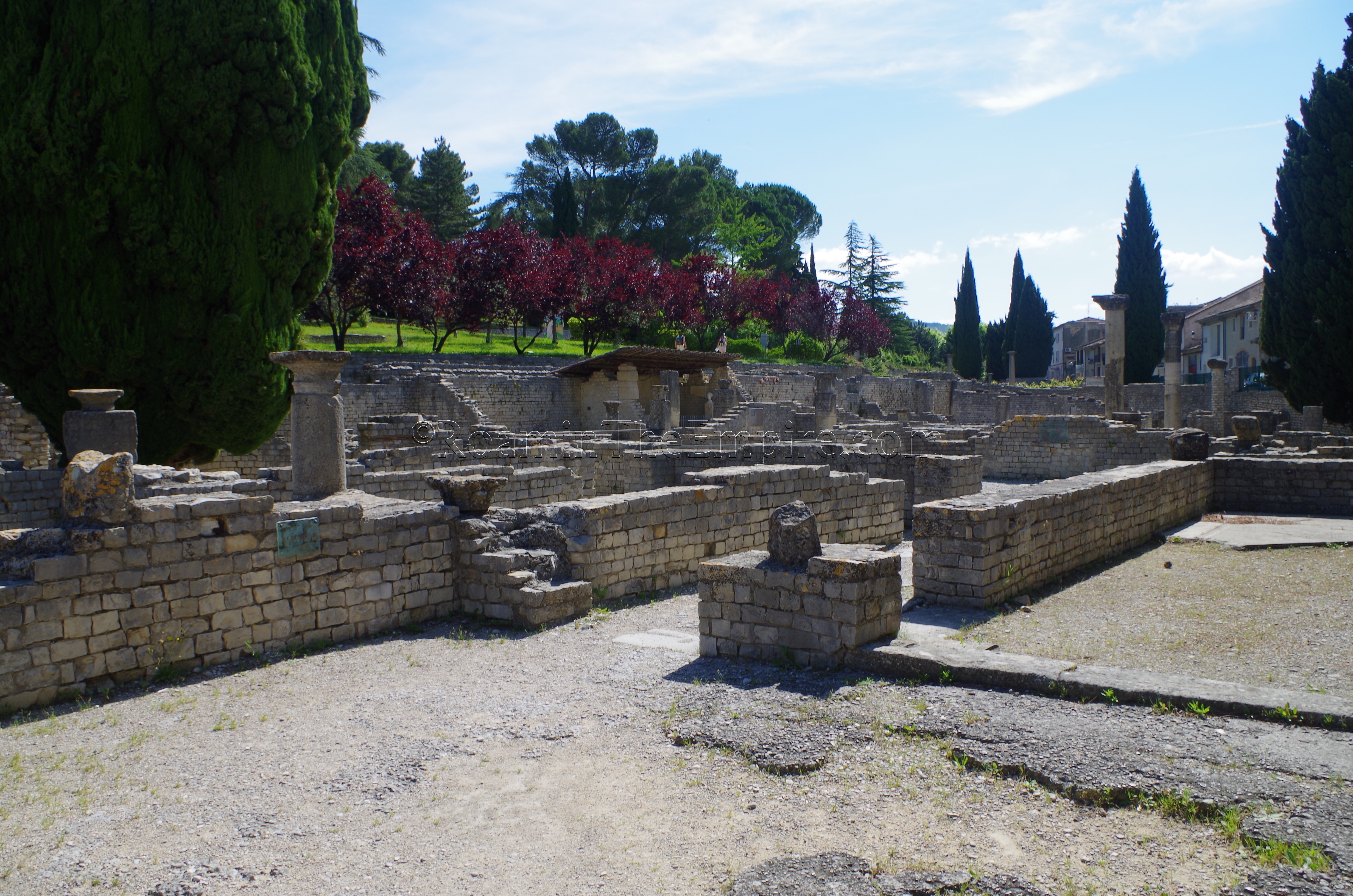
Continued From Vasio Vocontiorum Part I
Puymin
La Villasse is exited through the same way it is entered, and the entrance to Puymin is just directly across the road where the ticket is purchased. Immediately inside the park is another large residence, the Maison de l’Apollon Lauré (House of the Laurelled Apollo), sometimes referred to as the House of the Messii after an inscriptions dedicated to the Messii family were found. The current name refers to a marble head of Apollo found in it. The entire house, dating from the end of the 1st century CE, is not excavated, as a significant portion still lies under the modern town, but about 2,000 square meters are on display. While many of the rooms are largely indistinguishable, the kitchen, a small bathing section, and some reconstructed latrines are discernable among the excavated rooms of the house. Some in-situ mosaic is also present in a central court area.
To the North of the Maison de l’Apollon Lauré is the Maison à la Tonnelle, the Arbour House. Built during the late 1st or early 2nd century CE, this residence covers about 3,000 square meters. The main feature remaining of this house is a large garden with several decorative basins and features, some of which are fairly identifiable today. Like the previous house, there are also some reconstructed latrines and a small bathing area, but the bathing area isn’t really as obvious as in the other house. There are some outbuildings south of the garden, about halfway to the Maison de l’Apollon Lauré. A short ways on the path from the house, north to the theater, there are also the remains of a fountain.
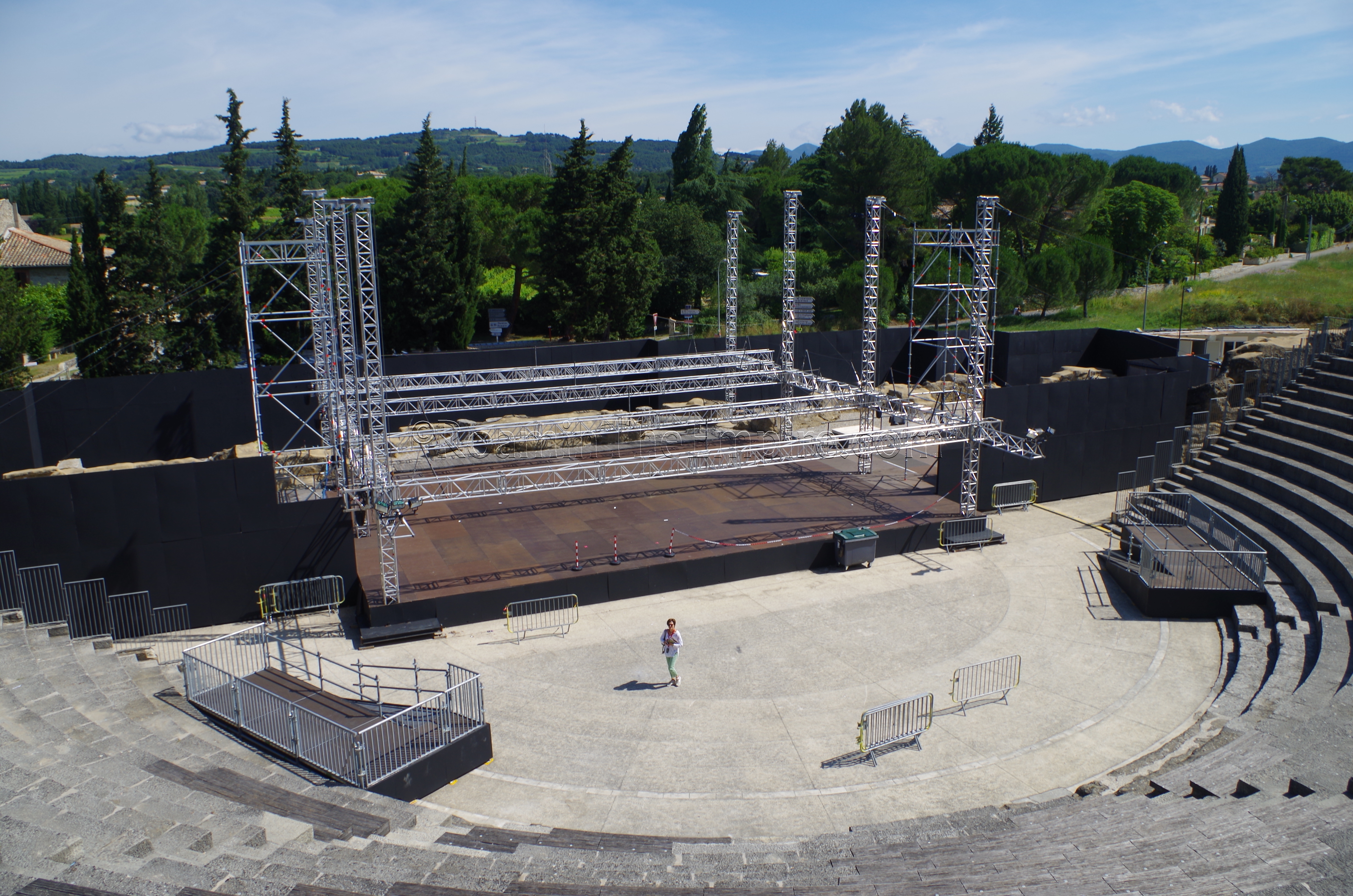
The theater, probably built in the 1st or early 2nd century CE like many of the other constructions here, held between 6,000 and 7,000 spectators. A significant portion of the theater remains, including parts of the scenae, but most of the cavea have been reconstructed and resurfaced for modern use. As such, when I visited during the summer, much of the scenae was covered up and inaccessible due to a modern stage constructed for use in summer performances. Interestingly, some of the vomitoria appear to be tunneled out of the rock of the hill, rather than freestanding constructions; though the theater does make use of the sloping topography, it is still primarily a freestanding building.
Behind the theater there is a tunnel through the hill that dates to Gallo-Roman times, and even today provides a means from the theater to the east side of the hill. On this side of the hill are the remains of the Maison du Paon (the Peacock House), which are inaccessible, but visible from the trail that leads to around the north side of the hill. The structure gets its name from a mosaic with a peacock panel that was found here and is currently on display in the museum. The area also apparently has the foundations of an Augustan era temple, though these are not visible at all and look to be on a parcel of private land.
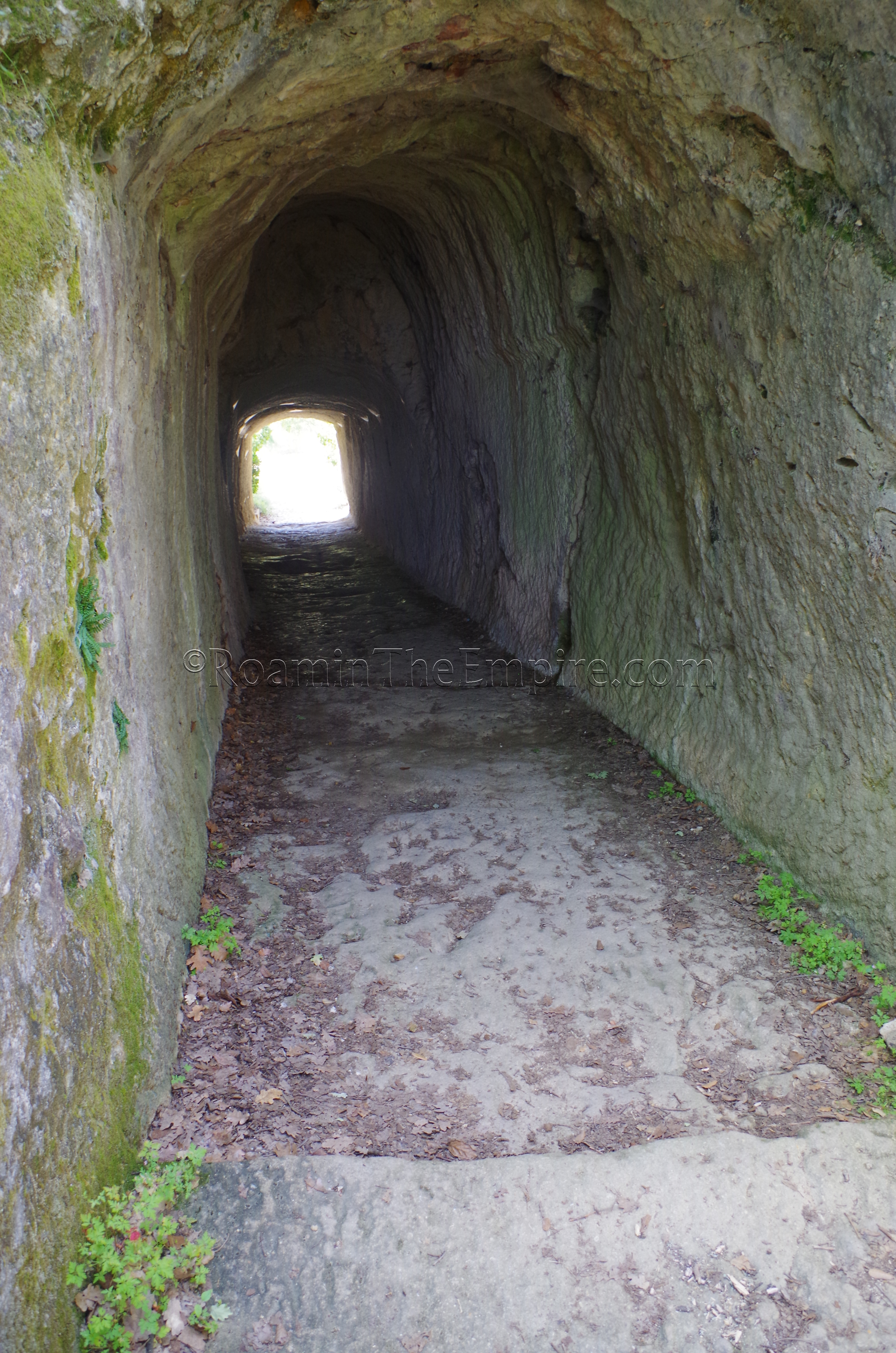
Adjacent to the exit of the tunnel is what is described as a processional way and a fragmentary nymphaeum. Unfortunately, the most significant portions of the nymphaeum were inaccessible and largely obstructed due to the construction of another temporary stage for music performances. A water channel that presumably led to the nymphaeum and/or the nearby latrines is visible along the so-called processional route, which apparently lead up from a monumental gateway near the nymphaeum (and also obstructed by the temporary stage) or from the portico sanctuary and up through the tunnel to the theater. There are also a set of what are described as latrines adjacent to the area of the nymphaeum, but they are not especially recognizable as such, unlike the reconstructed latrines in some of the houses.
South of the nymphaeum are groups of buildings currently referred to as an artisan quarter. There was not much information about this area; others had informational signs, but there was nothing even labeling this area. It didn’t seem to be a priority as it was a bit overgrown in comparison to the other areas of the site. The area has also alternatively been identified as a multistory residential insula, but that identification seems to be older than that of it being an artisan area. There is access to the actual structures, but, without any kind of context, it’s largely just nondescript rooms with a few dolia scattered around.
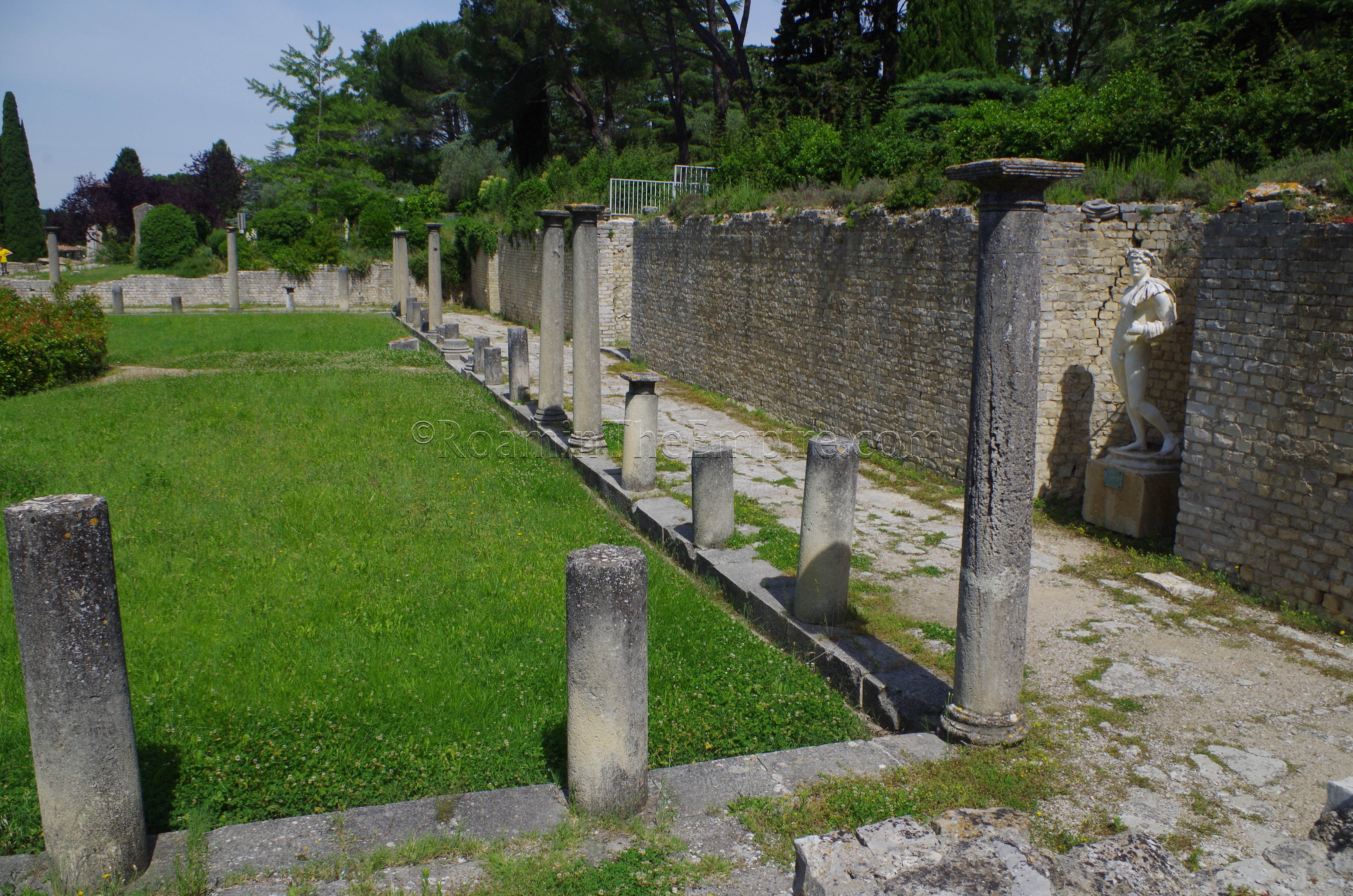
The final area of significant remains in Puymin is the Portico Sanctuary (sometimes also referred to as the Portico of Pompey after a partial inscription dedicated to a woman named Pompeia found here), dating to the 1st or 2nd century CE. What remains here is about half of a square open space surrounded on all four sides with a portico; portions of three of these sides remain, with the fourth completely unexcavated. There is a room off the north/northeast side of the portico in which a statue of an athlete, Diadumenus, was found (a cast of which is placed in there currently, with the original being in the British Museum). Two other statue niches along the north side also contained statues of Hadrian and Sabina, casts of which are also at their in-situ find spots with the originals being in the on-site museum. The exact nature of the building is unclear. It may have just been a public garden, or served a religious purpose, perhaps used in conjunction with the imperial cult.
Musée Archéologique Théo Desplans
The final part of the Puymin archaeological area is the Musée Archéologique Théo Desplans, which shares the same hours as the rest of the park and is not accessed independently. The museum shop, though, does seem to have a siesta break in the early afternoon, but since there is no ticketed access, this doesn’t affect museum hours. I was rather surprised at the collection here; on-site museums typically do not tend to be very extensive, but the collection here was fairly substantive and varied. The artifacts here spanned from numismatics and smaller ceramics to monumental statuary, mosaics, and large inscriptions.
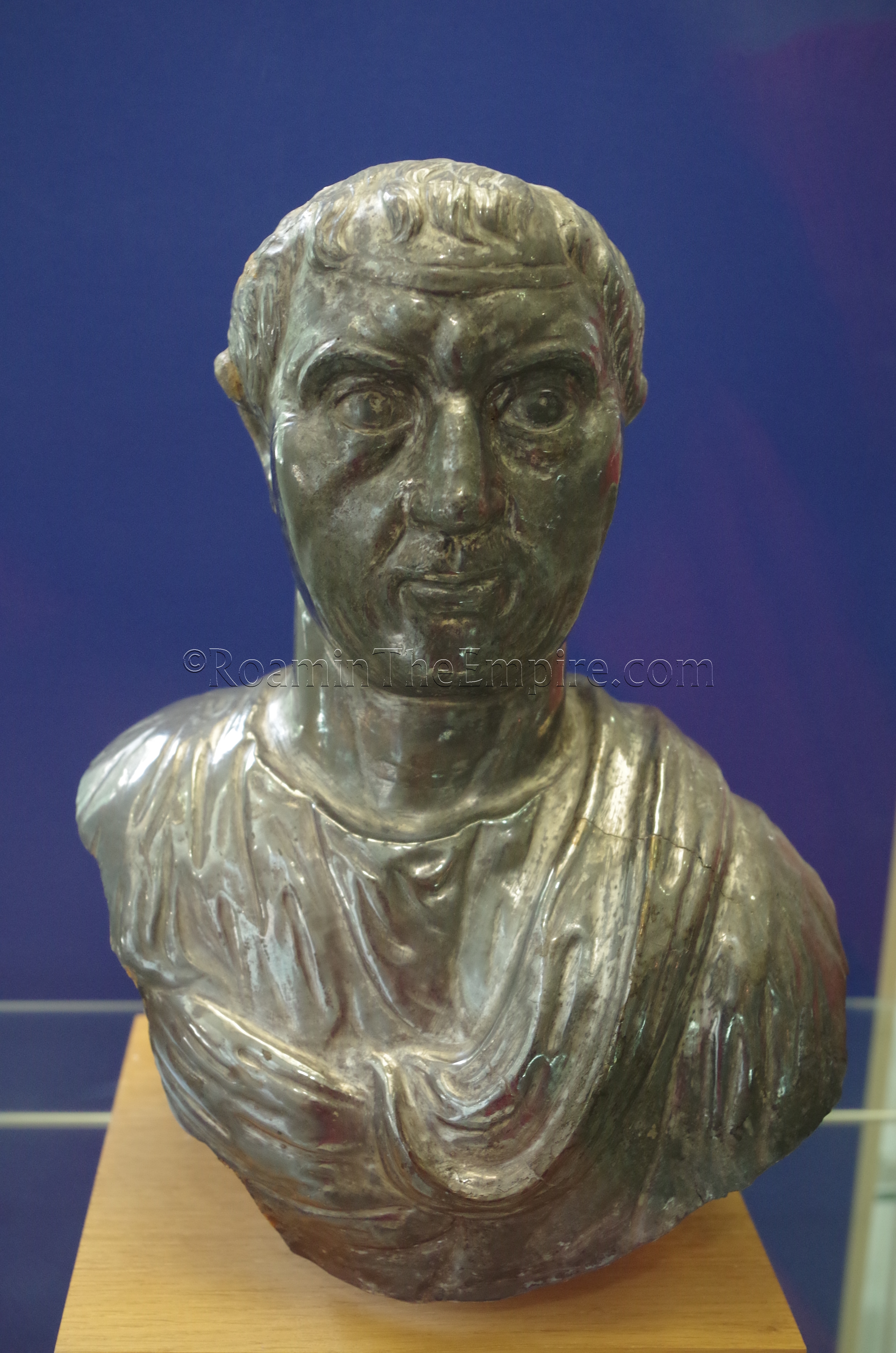
Some of the biggest highlights of the collection have already been discussed; the mosaic from the Maison du Paon, the silver bust from the Maison du Buste en Argent, and the statues of Hadrian and Sabina from Portico Sanctuary. There are also larger than life size statues of Claudius and Domitian on display as well. The museum has a nice spread of altars and objects dedicated to local deities or aspects of Roman deities. Some examples of graffiti inscribed on painted walls from a house excavated elsewhere in the city, including some images of gladiators is also particularly interesting.
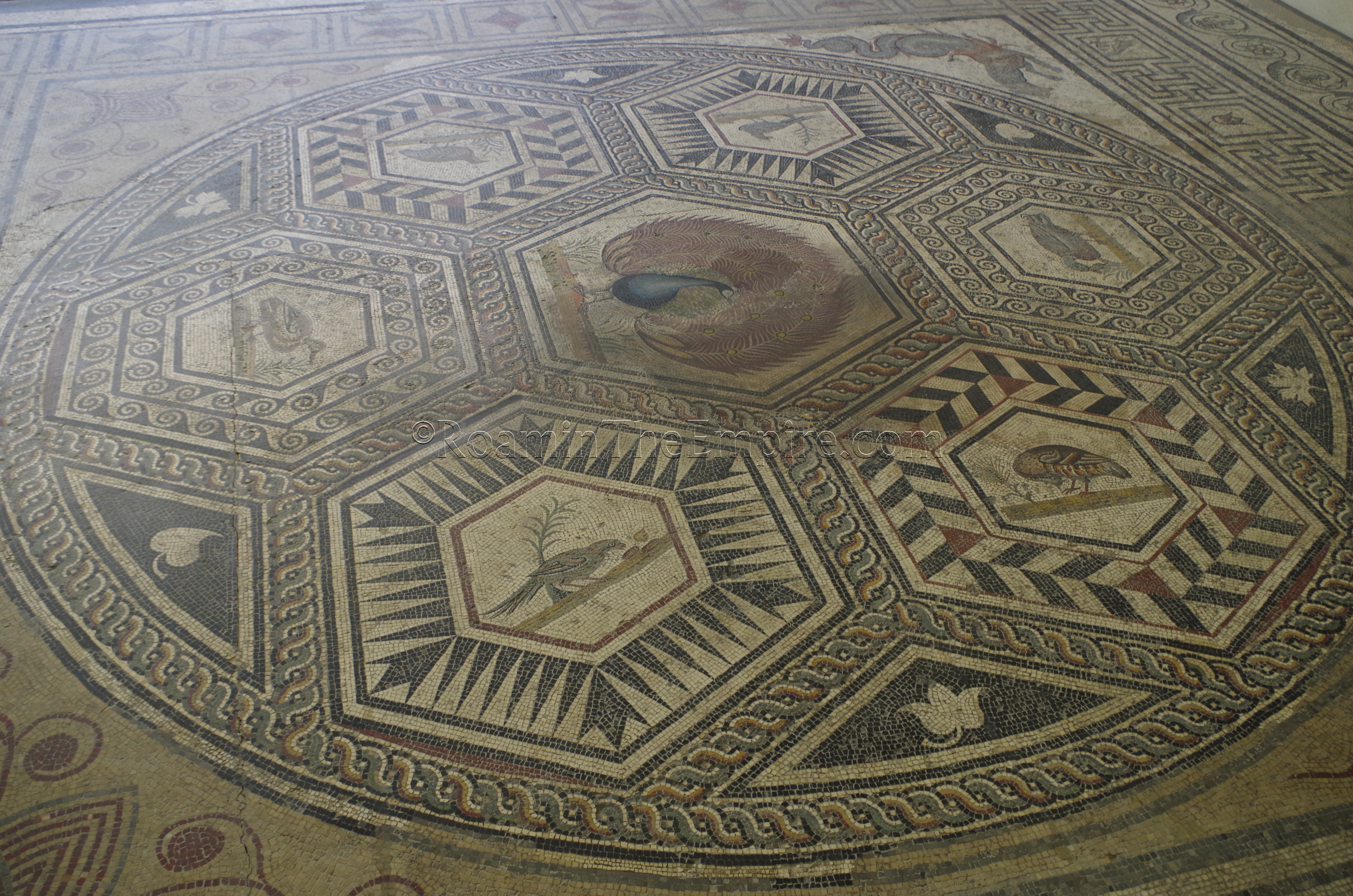
Most objects here have informational signs, and there are several larger informational boards regarding the site and town in general. None of the information, however, is in any language other than French. As always, this isn’t a complaint, but rather just a word of preparation for those that do not speak French. It took me about an hour to get through the museum, which, that is taking into account not being able to read much of the information present.
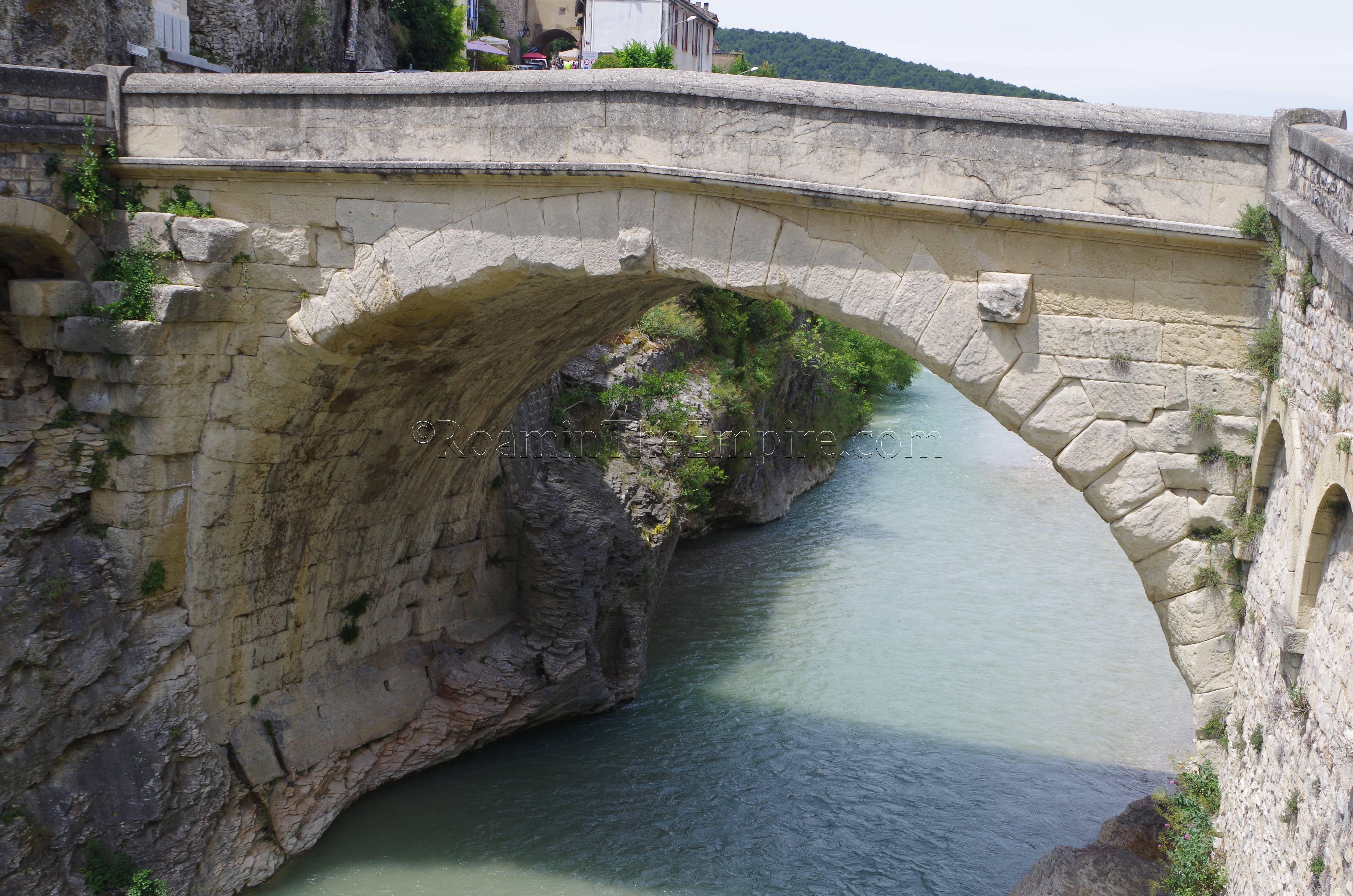
Other Sites of Vasio Vocontiorum
There are a few vestiges of the Vasio Vocontiorum that are not within the bounds of the archaeological parks. The first, and most high profile, is the Pont Romain, the Roman Bridge. Located about half a kilometer south of the archaeological park, the bridge spans the Ouvèze as part of the road to Carpentoracte Meminorum/Forum Neronis (Carpentras). As would be expected, the bridge has undergone many renovations and partial reconstructions, but the Roman constructions of the bridge can clearly be seen in the arch and the bridge below the point of the apex of the arch. Constructed in the 1st century CE, the bridge has interestingly outlived more modern bridges that have collapsed or been swept away by flooding in recent years.
North of the archaeological parks there are a few remains of Vasio Vocontiorum that might be worth seeing for those interested. In the center of the traffic circle at the northern extent of Avenue Général de Gaulle, where it intersects with Avenue François Mitterand, there are the remains of some walls and a few columns. The exact nature of these is unclear, as there don’t seem to be any known structures corresponding to that exact location. The columns look to be Roman originals, but the walls may very well be reconstructions and simply in place as a decorative element as one enters the main area of archaeological remains in the city.
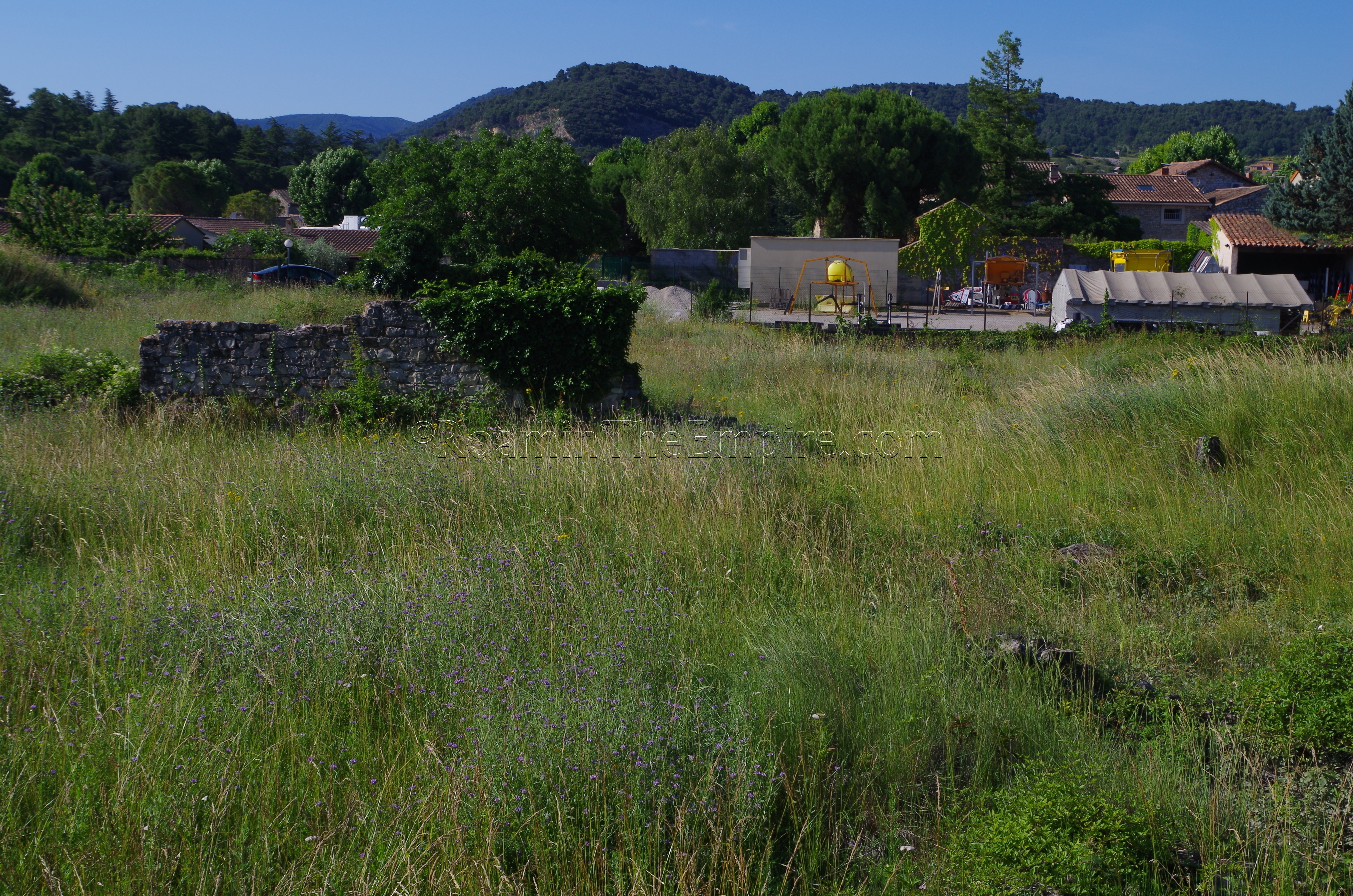
A bit further on along the south side of Avenue Chanoine Sautel to the east of Chemin de Saumelongue (the northern continuation of Avenue Général de Gaulle past the traffic circle) are the remains of some public baths. Constructed in the middle of the 1st century CE, they were expanded later that century. Around 285 CE, they were abandoned after the sack of the city and used as a stone quarry from that point forward. Unfortunately, there is not much to see here, as the baths are inaccessible and only visible from the street. Even from the street, the area is largely overgrown and there are only the remains of a few walls sticking up among the undergrowth.
A visit to Vaison-la-Romain is certainly worthwhile, and despite the exenstive remains, is easy to see in about a half a day. All told, I spent about 4 and a half hours in the town, and about 3 and a half of that was seeing the core sites (archaeological parks, museum, and bridge).
Sources:
Bromwich, James. The Roman Remains of Northern and Eastern France: A Guidebook. London: Routledge, 2003.
Cicero, Pro Fonteio.
Pliny the Elder, Naturalis Historiae, 3.37.
Stillwell, Richard, William L. MacDonald, and Marian Holland. McAllister. The Princeton Encyclopedia of Classical Sites. Princeton, NJ: Princeton U Press, 1976.
Strabo, Geographica, 4.6.4-5.


